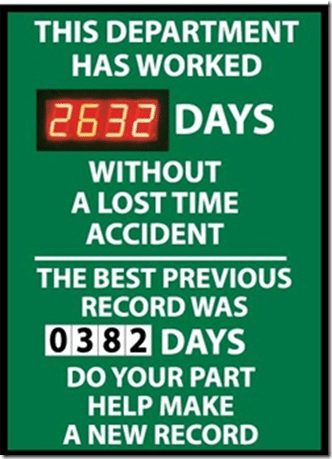Why Would You Talk That Way?
 Postman’s classic book ‘Crazy talk, Stupid Talk’ (1976) discusses the power of semantic environments. That is, the context in which we talk. For example, the words ‘sorry I have sinned’ may make sense in a confessional but don’t make much sense in a court room. Similarly, the words ‘your eyes are like the stars in the heavens’ might make sense in the back seat of a car but not much sense in an astronomy class. Postman suggests that mixing metaphors, language and symbols is ‘crazy’ when the words don’t match the context.
Postman’s classic book ‘Crazy talk, Stupid Talk’ (1976) discusses the power of semantic environments. That is, the context in which we talk. For example, the words ‘sorry I have sinned’ may make sense in a confessional but don’t make much sense in a court room. Similarly, the words ‘your eyes are like the stars in the heavens’ might make sense in the back seat of a car but not much sense in an astronomy class. Postman suggests that mixing metaphors, language and symbols is ‘crazy’ when the words don’t match the context.
Sometimes it is hard to know what the semantic environment is, particularly if you are unfamiliar with the context. I was walking past a skate park the other day and stopped to watch some of the young people doing ‘tricks’ (apparently the wrong word), and didn’t understand much of the language. Indeed, I knew quite quickly that there was no way I could speak into this semantic environment and if I did, I would sound pretty out of place. Similarly, if one was in a religious environment many wouldn’t know what to say or understand what was being said.
Context provides a semantic environment so that words make sense. Two semantic environments usually don’t coexist that well. In a context where integrity is required eg. football, it doesn’t make sense to use the language of innocence in drug taking when the context is all about understanding the physicality of performance and body. The 3 year saga at the Essendon football club (http://www.heraldsun.com.au/sport/afl/teams/essendon/essendon-drugs-scandal-the-background-behind-the-biggest-doping-saga-in-australian-sport/news-story/d35aacd62cb510a11d83f620ff2960f2) shows that the semantic environment of integrity in sport doesn’t mix well with the language of cheating!
There is nothing wrong with the language of commerce but bringing it into the semantic environment of safety doesn’t make sense. Financially rewarding people for KPIs in safety is a recipe for corruption. Tagging money to safety will always foster hiding, under reporting and drive anti-learning behaviours. The key question is, does the language suit the semantic environment? Postman makes the point: ‘Can anyone plausibly imagine an overburdened wife, having failed to persuade her husband that she needs help, pulling out a contract from the bureau drawer and insisting he live up to its terms, on pain of legal sanctions? This is not marriage, it is the end of marriage! The language of the law is a great and useful instrument, but it is designed for the use of strangers, not lovers’.
Wachter http://www.nytimes.com/2016/01/17/opinion/sunday/how-measurement-fails-doctors-and-teachers.html) shows just what happens when semantic environments are confused. In discussing the increasing demands for measurement in health and education he states ‘Two of our most vital industries, health care and education, have become increasingly subjected to metrics and measurements. Of course, we need to hold professionals accountable. But the focus on numbers has gone too far. We’re hitting the targets, but missing the point.’
Wachter says further: ‘All of this began innocently enough. But the measurement fad has spun out of control. There are so many different hospital ratings that more than 1,600 medical centers can now lay claim to being included on a “top 100,” “honor roll,” grade “A” or “best” hospitals list. Burnout rates for doctors top 50 percent, far higher than other professions. A 2013 study found that the electronic health record was a dominant culprit. Another 2013 study found that emergency room doctors clicked a mouse 4,000 times during a 10-hour shift. The computer systems have become the dark force behind quality measures.’
‘Starts innocently enough’ sound familiar? Wachter concludes ‘Whatever we do, we have to ask our clinicians and teachers whether measurement is working, and truly listen when they tell us that it isn’t. Today, that is precisely what they’re saying.’
Here is the problem, the core semantic environment for health and education is that of people. When education becomes all about numbers the discourse becomes ‘toxic’. Education does not belong to the semantic environment of statistics. Frieire (Pedagogy of the Oppressed) called this form of teaching ‘banking’. Learning is not about inputs and outputs, deposits and withdrawals. This is the problem when standardized testing is brought into an education system. Rather than focus on education and learning, NAPLAN schools now teach to NAPLAN outcomes. Schools become factories for counting rather than education and learning.
Similarly, the core semantic environment for risk and safety is that of people. However, this is not the language of safety. The conflict between a statistical environment and people environment makes the environment toxic. Instead of speaking about people, safety speaks of LTIFRs, LTIs and a host of measures that shift the focus off people onto a focus of statistics. Yet, when one speaks to people in the safety industry no one likes this, everyone wants to get back to their core focus, people? As long as safety people are forced to speak in conflict with their semantic environment (people not statistics) the work of safety will remain toxic and in conflict with itself.



Do you have any thoughts? Please share them below